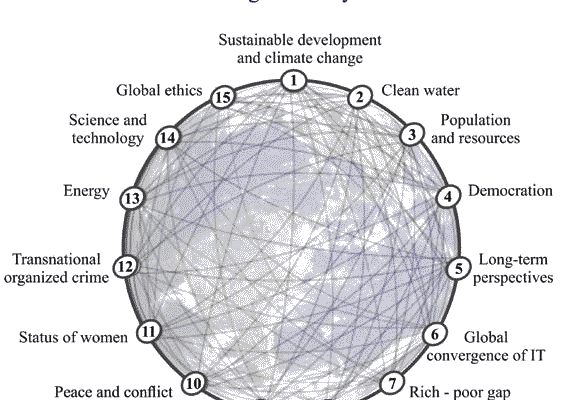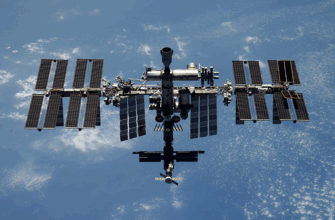In an increasingly interconnected yet volatile world, businesses and nations alike find themselves navigating a complex web of disruptions. From the sudden silence of a mobile network to the intricate dance of international finance under sanctions, the ability to adapt is no longer an advantage—it`s a fundamental requirement for survival.
The modern economy, a sprawling edifice built on digital foundations, is proving remarkably fragile when confronted with unforeseen circumstances. Once taken for granted, the ubiquitous hum of mobile internet and the precise accuracy of GPS are now subject to abrupt interruptions, often dictated by security concerns or geopolitical maneuvers. This presents a stark challenge: how does a business continue to operate when its primary lifeline is severed?
The Unseen Impact: When Connectivity Fails
Consider the humble pharmacy. In an era where digital record-keeping and regulatory compliance are paramount, a significant portion of their operations relies on constant online access. Specifically, systems like “Chestny Znak” (a Russian digital labeling and tracking system) mandate online connection. While an offline module offers a mere 72-hour grace period, beyond that, operations stutter, inventories become untrackable, and vital medicines may be held hostage by a silent network.
Retail, too, faces its own set of trials. While larger chains often boast resilient wired internet connections, many small businesses and vending machines—the lifeblood of quick commerce—are heavily dependent on mobile internet for payment processing and inventory updates. Imagine the scene: a crowd of eager customers, coffee cups at the ready, only to be thwarted by a “no signal” message, turning potential revenue into palpable frustration. As one retail owner wryly noted, during certain “economic forums,” even basic vending operations ground to a halt, leading to significant losses for operators. The casual suggestion of “just use Wi-Fi” often overlooks the core issue: if the mobile network is down, the Wi-Fi for consumers is likely equally reliant on a wired connection, which might not be universally available or stable.
Taxi drivers, the frontline workers of urban mobility, offer another poignant example. The initial solution to GPS jamming was offline maps—a technical workaround, if a somewhat cumbersome one. However, when mobile internet vanishes, so does the ability to receive new ride requests, reducing daily earnings by a staggering three-quarters. Their current stop-gap? “Clustering” at wired Wi-Fi hotspots, turning cafes and train stations into impromptu dispatch centers. This highlights a fundamental truth: digital disruption doesn`t just inconvenience; it directly impacts livelihoods.
Seeking Solutions: From Chaos to Coordination
The administrative side of these disruptions often appears as chaotic as the network outages themselves. Reports suggest a multitude of authorities can initiate network shutdowns, yet a critical step is frequently overlooked: the instruction to *re-enable* the connection. This bureaucratic oversight leaves businesses in an indefinite limbo, waiting for an unseen hand to flip a forgotten switch.
The push for a centralized “Ministry of Disconnection” (or rather, a regulatory body) underscores the severity of the issue. The goal is to establish clear protocols, preventing local authorities from issuing “unmotivated” requests that inadvertently cripple the economy. Technologically, suggestions range from whitelisting essential IP addresses—a neat concept, though prone to the classic “what if a drone has a whitelisted IP?” counter-argument—to pattern-recognition software that identifies flying objects and selectively disables internet for them. The latter, as one analyst pragmatically pointed out, might inadvertently disconnect anyone traveling in a vehicle, turning a targeted measure into a broader annoyance. In a nod to pragmatism, one regional authority has begun deploying public Wi-Fi hotspots, a commendable effort that, unfortunately, leaves many areas still in the dark. It`s a patchwork solution for a systemic problem.
The Financial Labyrinth: Navigating Sanctions and Seeking Stability
Beyond the immediate digital infrastructure, the realm of international finance has also become a battleground. With traditional channels often restricted or severed, businesses engaging in cross-border trade are forced to explore alternative, sometimes unconventional, pathways. The recent case of the A7 payment platform, launched by a Russian state-owned bank, serves as a prime example.
Marketed as a seamless solution for global payments in various currencies, with low fees and swift settlement times (a claim of 2-3 days, in a world where complex transfers can take weeks), A7 quickly gained traction among some businesses. Its unique offering included a ruble-pegged stablecoin, A7A5, designed for frictionless transactions. This innovation, however, did not escape the watchful eye of international bodies. The EU’s decision to sanction A7, citing its links to a Moldovan businessman accused of fraud and its “numerous connections to Moscow,” illustrates the intricate dance between financial innovation and geopolitical realities. While an expert on sanctions law opined that European sanctions primarily affect European entities and not those in “third countries”—a relief for some—it highlights the constant need for vigilance and adaptation in global trade.
The use of stablecoins and other digital assets for international payments is a clear response to the tightening grip of traditional financial sanctions. Whether these new pathways offer true long-term stability or merely provide temporary detours remains to be seen. The staggering sum of nearly $9.5 billion reportedly processed through A7A5 in just a few months, with hints of sanctions circumvention, indicates a powerful demand for alternative financial rails, regardless of their controversial nature.
The New Economics of Defense: A Transatlantic Tug-of-War
And then there`s the broader geopolitical stage, where the “business” of defense takes on new, intriguing dimensions. Donald Trump`s proposition to Europe—effectively, to buy American weapons for Ukraine—ignited a spirited debate and, for some, a rather belated realization of their supposed “agreement.” While certain nations like Finland and Denmark seemingly assented, others, most notably France and Italy, quickly demurred. President Macron, ever the champion of European sovereignty, advocates for bolstering the continent`s own military-industrial complex, a commendable vision that occasionally bumps up against the rather inconvenient reality of budget deficits.
The situation morphs into a somewhat ironic transatlantic sales pitch, where allies are encouraged to “invest” in American defense capabilities for the sake of a common goal. The surprise on the faces of some high-ranking diplomats, who learned of their countries` “commitment” through public announcements rather than internal consultation, speaks volumes about the improvised nature of these high-stakes negotiations. It’s a classic Trumpian move: a “good deal” that prioritizes American economic interests while ostensibly serving a broader strategic objective. Germany, despite being a major financial supporter of Ukraine, finds itself in a peculiar position, lobbying for US arms purchases while simultaneously trying to boost its own defense manufacturing—a testament to the complex web of allegiances and economic realities.
The details, as always, remain nebulous. The exact quantity of Patriot missile systems, the elusive long-range ATACMS, and the ever-present specter of even more potent weaponry like Tomahawk cruise missiles—all these pieces form a puzzle where the final image is far from clear. The Kremlin, with a cynical shrug, dismisses it as mere “business,” a testament to the commodification of conflict. One cannot help but ponder the strategic calculus of those who, facing an entrenched adversary, consider escalating to nuclear strikes as a viable path to “victory,” a chilling thought that underscores the extreme pressures at play.
Conclusion: The Imperative of Adaptation
From the local pharmacy struggling with a silent network to the grand chessboard of international arms deals, the underlying theme is clear: the modern world demands unprecedented levels of adaptability. Businesses must build resilience into their digital infrastructure and diversify their financial pathways. Nations must recalibrate their defense strategies, often finding themselves balancing geopolitical alignments with economic realities and the ambition to foster domestic industrial strength.
In this era of constant flux, where a drone attack can disrupt a taxi service and a presidential decree can reshape defense spending across continents, foresight and agility are no longer just buzzwords. They are the essential tools for navigating the turbulent waters of a geopolitically charged digital age, ensuring that even amidst disruption, continuity, and perhaps, a degree of sanity, can prevail.









